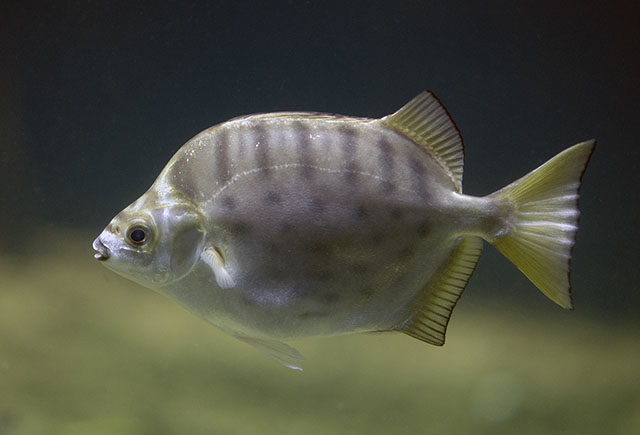| Scatophagidae (Scats) |
| 40 cm SL (male/unsexed) |
|
benthopelagic; freshwater; brackish; marine; depth range 0 - 5 m, amphidromous |
| Indo-West Pacific: Sulawesi, Indonesia to western and eastern Australia and New Caledonia. |
|
Dorsal spines (total): 7-12; Dorsal soft rays (total): 16-16; Anal spines: 4-4; Anal soft rays: 15-16. Greenish or silvery; individuals greater than 4 cm SL with 7 to 12 narrow dark vertical bars on dorsal half of flanks and with spots, usually smaller than eye, more or less arranged in vertical rows in ventral half; lips black; posterior edge of caudal fin and soft portions of anal and dorsal fins with a narrow black margin which disappear in individuals larger than 6 cm SL (Ref. 43044). |
| Found in coastal estuaries, river entrances and rock pools (Ref. 9002, 44894). Inhabits mangrove creeks and the lower reaches of freshwater streams (Ref. 44894). Anterolateral glandular groove with venom gland (Ref. 57406). Sometimes sold fresh in markets (Ref. 43044). Juveniles collected for the aquarium trade (Ref. 43044). |
|
Least Concern (LC); Date assessed: 04 June 2020 Ref. (130435)
|
| venomous |
Source and more info: www.fishbase.org. For personal, classroom, and other internal use only. Not for publication.

